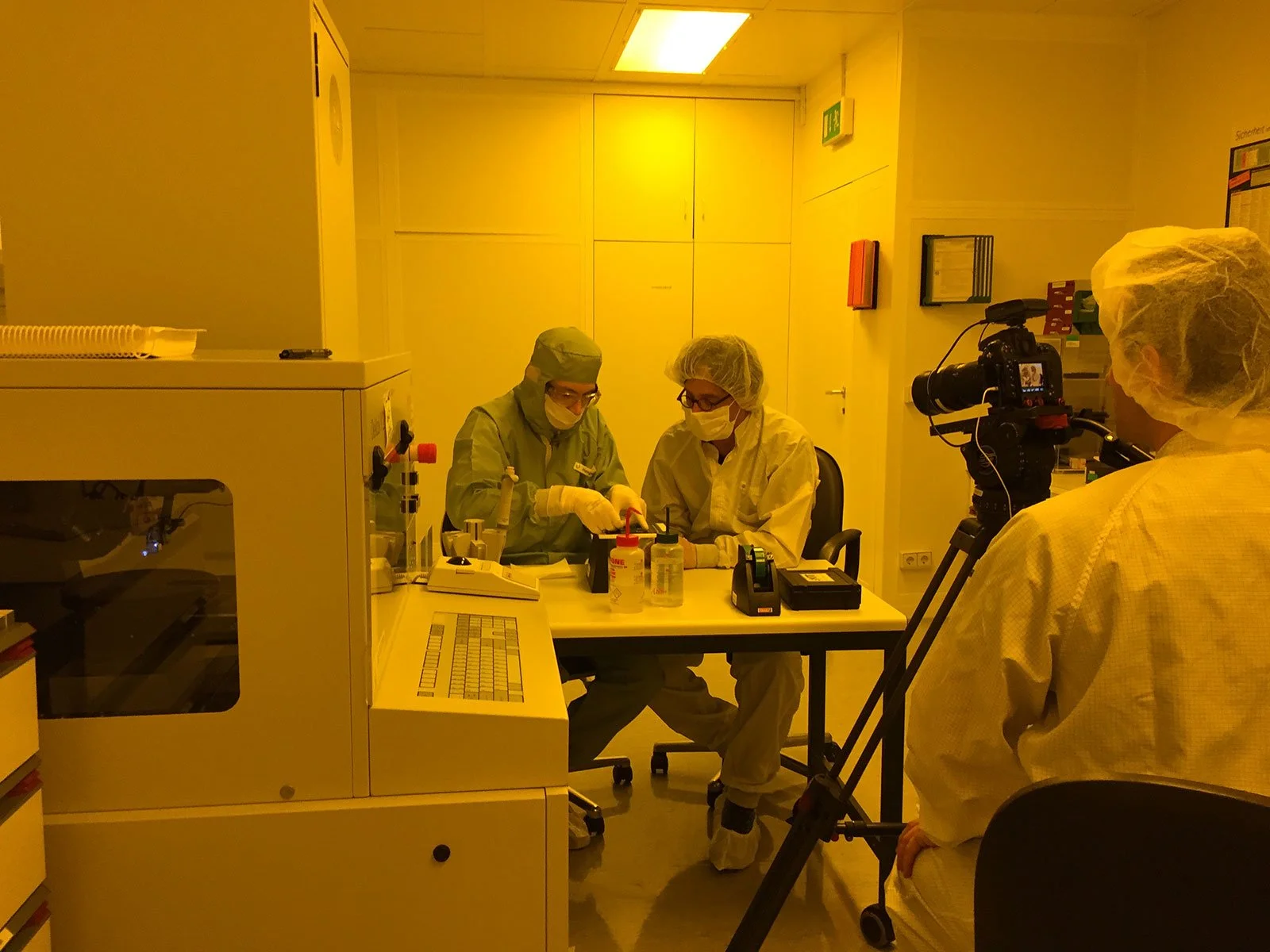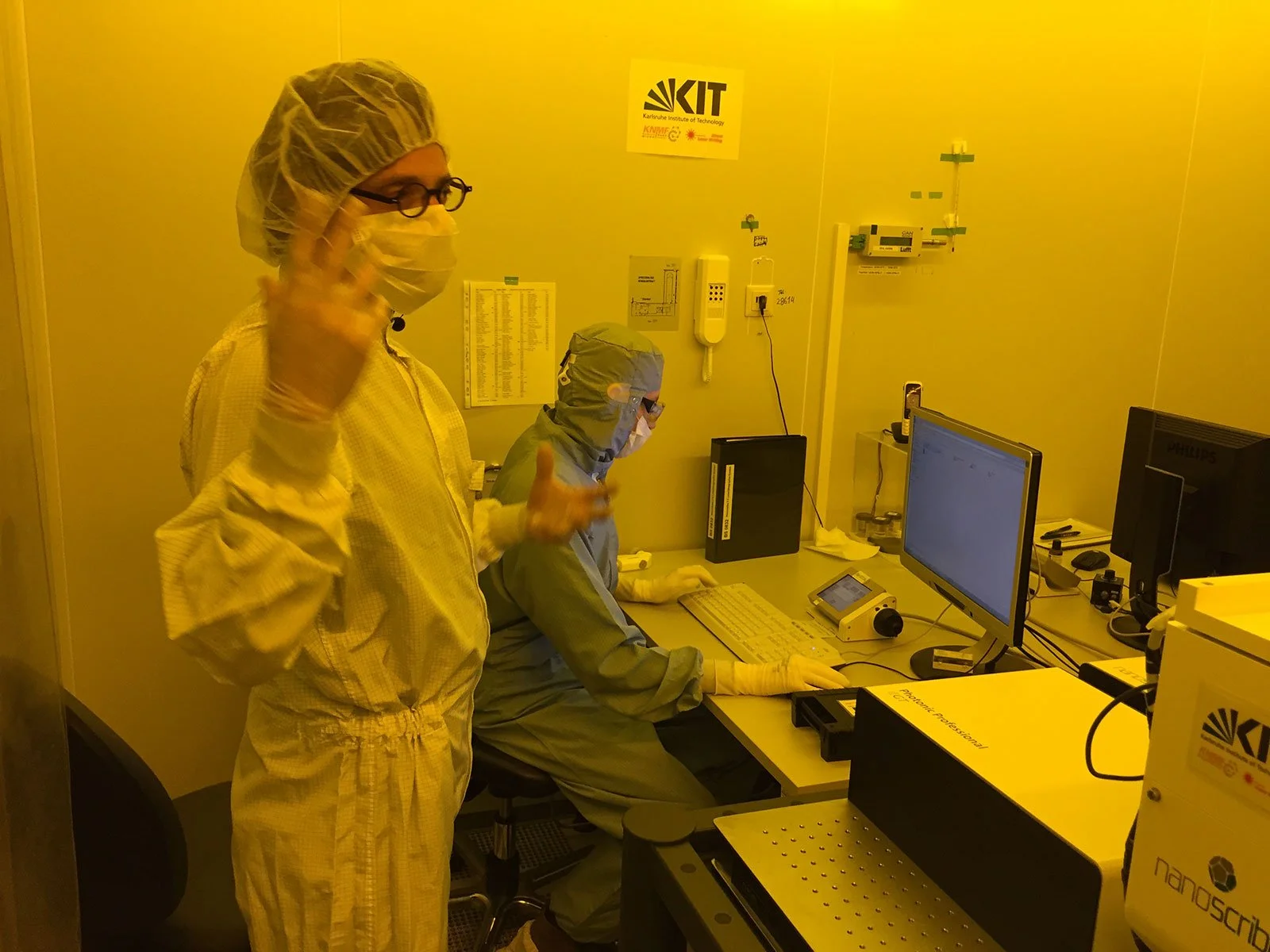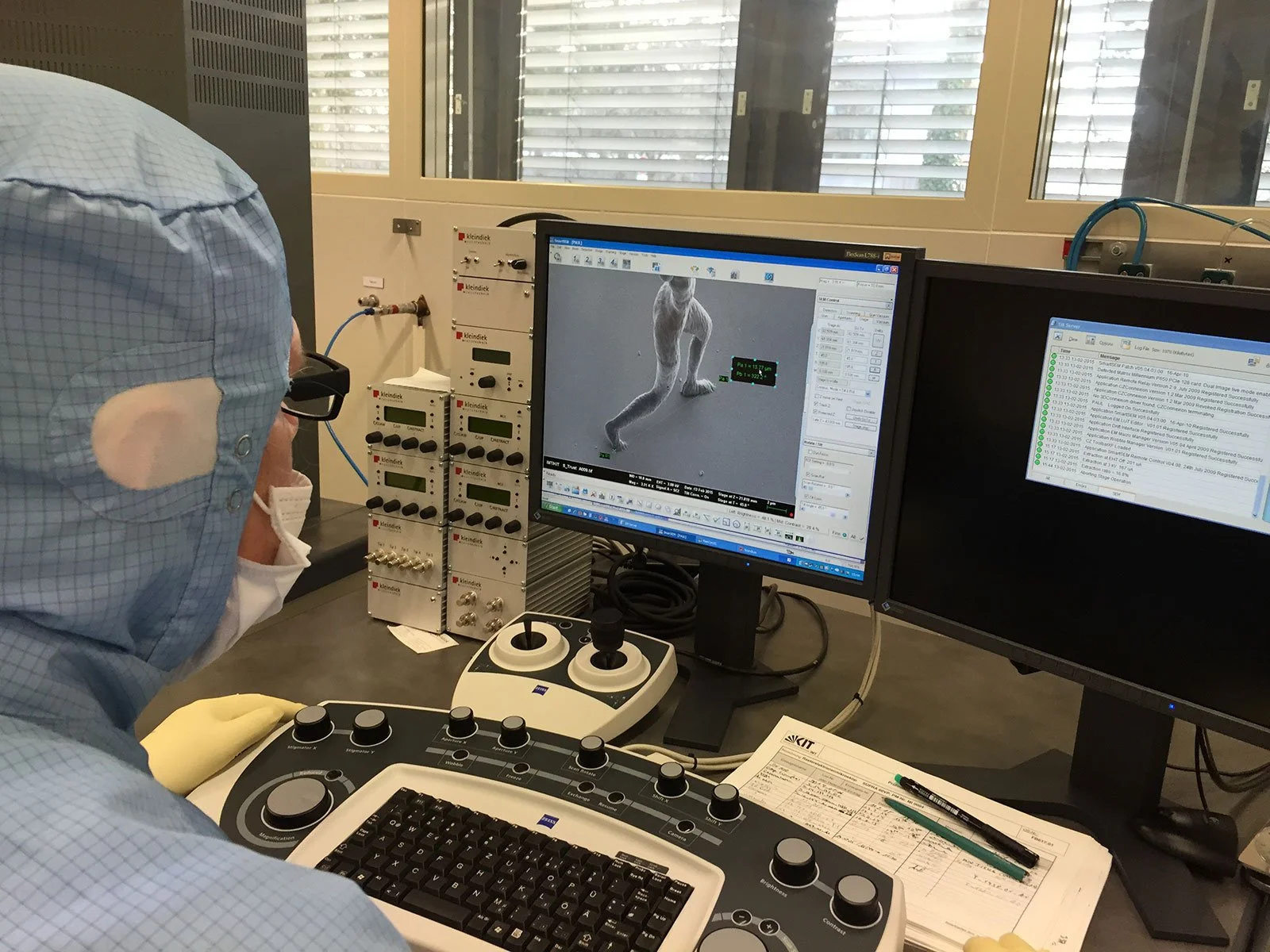Behind the Scenes
The making of Nano Sculptures
So How Did The Idea And The Science Come Together?
For me the essence of Cupid and Psyche is the “legend” itself. It talks of Gods and magic and impossible feats. The creation of a series of sculptures so small as to be invisible to the human eye seemed to bring a beautifully poetic touch to the rigid science of nanotech. Not only are Cupid and Psyche in themselves a myth, but to some extent this series of sculptures themselves take on mythical proportions. One could even take it deeper into the almost mythical nature of the Quantum physics of two-photo lithography.
Ultimately though, even in their presence of these sculptures, they “do not exist” according to the information your unaided senses provide. The science and the art came together in a beautiful dance of essence vs engineering. Absolute vs legend. Science vs Myth.
Based on an interview with Popular Science Magazine, January 2015
How Did The Team Come Together?
The team came together through sheer will. The synthesis of art and science is a wonderful area to be in really. In the seemingly dry world of engineering it doesn’t take much to convince hard-core scientists to have a bit of fun… they need it! And the offer of getting involved in an art project generally brings sparkles to engineer eyes (as long as the art project has a justifiable and mathematically sound essence). So attracting great minds is relatively easy. Art has a magical charm about it. If anything it gives the scientists something to talk about over dinner that for once can actually excite their friends and family.
In the studio we've built a dream team over the years. Of course there is the shining new entrant, Stefan Hengsbach from Karlsruhe…well he was just a wonderful blast of energy who took to this project like a duck to water. It was his pure enthusiasm that made this project come to life. I hear now from Stefan that it has actually lead to a new piece of research being created. We struggled with the arms in the sculpture as the load meant that the fabrication process was glitching out at the extremities. Yehiam from Weitzmann was also a great source of inspiration, keeping me focused and informed along the way. He was the one that ultimately set me on the two-photon lithography road. Then there is the post production team. The other universities that photographed the ant and the needle using their own talented SEM teams. To some extent this series of sculptures reminds me of how the film industry works. You need large teams of thinkers, builders, creatives and amazing technology.
Photogrammetry
Capturing the Psyche
Photogrammetry, when applied to the world of sculpture, unlocks a fascinating blend of art and technology. In this context, the technique involved meticulously scanning my art partner (and wife), Yifat Davidoff, using hundreds of photographs taken from every conceivable angle. This array of images is then fed into specialized software, which stitches them together using advanced algorithms. The result is a highly detailed, three-dimensional digital model, capturing every nuance and contour. By combining the age-old art of sculpture with cutting-edge photogrammetry, we were able to create works that are both true to life and imbued with their creative vision, bridging the gap between the tangible and the digital in an extraordinary synthesis of artistic and technological skills.

Fabricated
Using quantum technology
Just how small is “nano?” In the International System of Units, the prefix “nano” means one-billionth, or 10-9; therefore one nanometer is one-billionth of a meter. It’s difficult to imagine just how small that is, so here are some examples:
A human hair is about 100,000 nanometers (100 microns) thick
The scale is these sculptures approximately equals the amount your fingernails grow every 5 or 6 hours.
So how is it made?
The structure is created using a ground-breaking new technology called Two-photon Lithography. Ultimately these works are created using the physical phenomenon of two photon absorption. Art, literally created with Quantum Physics.
If you illuminate a light-sensitive polymer with Ultra Violet wavelengths, it solidifies wherever it was irradiated in a kind of crude lump. Some of you may have experienced a polymer like this first hand at the dentist when your filling is glued in with a UV light.
If however you use longer wavelength intense light, and focus it tightly through a microscope, something wonderful happens: at the focus point, the polymer absorbs TWO PHOTONS and responds as if it had been illuminated by UV light, namely it will solidify. This two photon absorption occurs only at the tiny focal point - basically a tiny 3D pixel (called a Voxel). The sculpture is then moved along fractionally by a computer controlled stage and the next pixel is created. Slowly, over hours and hours the entire sculpture is assembled voxel by voxel and layer by layer.
Failure is part of the journey
It really took an inordinate amout of time to get each of these nano sculptures right. In the images here you can get a sense of so of the failed works.
Films with thanks to Stefan Diller
Now to try and see the artworks
Photographing something so small aint that easy
Ground-breaking film created in a Scanning Electron Microscope (SEM)
This revolutionary filming technique draws on the early days of the film industry. Using Stop Frame Photography to painstakingly create moving image.
Using a Scanning Electron Microscope (SEM) at high magnification, hundreds of images of the nano sculpture were captured as a Piezo stage was rotated to a precision of below one ten-thousandth of a degree. Each individual frame in the sequence can take several minutes to capture (depending on resolution), meaning that one second of film can take up to 4 hours to film. A painstakingly detaile d process, in which any micro-blip means starting again from scratch. This is all done with a ground-breaking optical system developed by Stefan Diller, Wuerzburg, Germany called Nanoflight.Creator. The only system in the world capable of SEM film.
An SEM does not use photons (normal light) to capture an image. The wavelength of light is too large to capture the details in the Elephant. Electrons are focused on to the elephant, which is coated in gold and rebounds are measured, forming a “picture” based on the reflection intensity of the electrons.
The effect of this from a filmic perspective is that one is not operating in an environment of light. Shadows and “colour” behave differently and at this quantum level, and our traditional expectations of light have to be thrown out the window. All manageable for a single picture, but when compositing thousands of individual photographs, it becomes a different story completely. A series of techniques and technologies drawn from the special effects world needs to be applied in post-production to create a stable film.
In summary, the creation of this film involves a wonderfully diverse set of creative energies, from bespoke electronics and software to quantum physics and leading-edge scientific tool to modern special effects. A feat of art and science at its most beautiful.
Each frame from this film will be minted as an NFT
Ground-breaking film created in a Scanning Electron Microscope (SEM)
This revolutionary filming technique draws on the early days of the film industry. Using Stop Frame Photography to painstakingly create moving image.
Using a Scanning Electron Microscope (SEM) at high magnification, hundreds of images of the nano sculpture were captured as a Piezo stage was rotated to a precision of below one ten-thousandth of a degree. Each individual frame in the sequence can take several minutes to capture (depending on resolution), meaning that one second of film can take up to 4 hours to film. A painstakingly detaile d process, in which any micro-blip means starting again from scratch. This is all done with a ground-breaking optical system developed by Stefan Diller, Wuerzburg, Germany called Nanoflight.Creator. The only system in the world capable of SEM film.
An SEM does not use photons (normal light) to capture an image. The wavelength of light is too large to capture the details in the Elephant. Electrons are focused on to the elephant, which is coated in gold and rebounds are measured, forming a “picture” based on the reflection intensity of the electrons.
The effect of this from a filmic perspective is that one is not operating in an environment of light. Shadows and “colour” behave differently and at this quantum level, and our traditional expectations of light have to be thrown out the window. All manageable for a single picture, but when compositing thousands of individual photographs, it becomes a different story completely. A series of techniques and technologies drawn from the special effects world needs to be applied in post-production to create a stable film.
In summary, the creation of this film involves a wonderfully diverse set of creative energies, from bespoke electronics and software to quantum physics and leading-edge scientific tool to modern special effects. A feat of art and science at its most beautiful.
Each frame from this film will be minted as an NFT.









